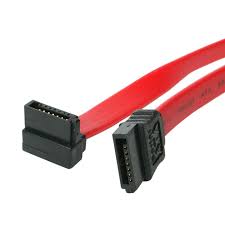Sata Cable, is a standard interface used for connecting storage devices like hard drives and solid-state drives (SSDs) to a computer’s motherboard. Since its introduction in the early 2000s, SATA technology has revolutionized the way data is transferred and stored, offering significant improvements over its predecessor, PATA (Parallel ATA). At the heart of this technology lies the SATA cable, a crucial component for ensuring efficient communication between storage devices and the computer.
What is a SATA Cable?
A SATA cable is a high-speed data cable used to connect SATA storage devices to the motherboard. It features a thin, flat design, allowing for better airflow inside computer cases compared to bulkier cables. SATA cables are typically available in different lengths to accommodate various setups, from compact laptops to large desktop PCs.
Types of SATA Cables
- SATA Data Cables: These cables are used for data transfer between the motherboard and storage devices. They come in different versions:
- SATA I (1.5 Gbps): The original SATA standard, offering a maximum data transfer rate of 1.5 Gbps.
- SATA II (3.0 Gbps): This version doubles the speed, allowing for data transfer rates up to 3.0 Gbps.
- SATA III (6.0 Gbps): The latest version, providing the highest speeds currently available for SATA connections.
- SATA Power Cables: While SATA data cables handle data transfer, SATA power cables supply power from the power supply unit (PSU) to the SATA devices. These cables typically have 15 pins and are designed to connect directly to the power supply.
Key Features of SATA Cables
- Ease of Use: SATA cables have a straightforward design, featuring a latch mechanism that securely holds the connection in place, making installation and removal easy.
- Thin Profile: The flat design of SATA cables allows for better cable management and improved airflow within the computer case, reducing the risk of overheating.
- Backward Compatibility: SATA interfaces are designed to be backward compatible. This means that a SATA III cable can be used with SATA II or SATA I devices, although the speed will default to the lowest version.
Applications of SATA Cables
SATA cables are primarily used in:
- Desktop Computers: Connecting internal hard drives and SSDs to the motherboard.
- Laptops: Providing connections for storage devices in compact designs.
- External Enclosures: Enabling external hard drives and SSDs to connect to computers via USB or eSATA ports.
- Data Centers: Facilitating connections in servers and storage arrays for efficient data management.
Choosing the Right SATA Cable
When selecting a SATA cable, consider the following factors:
- Length: Choose a cable length that suits your setup to ensure proper cable management without excessive slack.
- Version: Opt for SATA III cables if you plan to use SSDs or high-speed HDDs to take full advantage of their speed capabilities.
- Quality: Higher-quality cables often provide better shielding and durability, reducing the risk of data loss and improving performance.
Conclusion
SATA cables play a crucial role in the functionality and efficiency of modern computing systems. By facilitating high-speed data transfer between storage devices and motherboards, they enable users to experience faster boot times, quicker file access, and overall improved system performance. As technology continues to advance, SATA cables remain a vital component in the landscape of computer hardware, ensuring that users can fully utilize the capabilities of their storage solutions. Whether you are building a new PC, upgrading storage, or simply managing existing components, understanding SATA cables is essential for optimizing your system’s performance.




